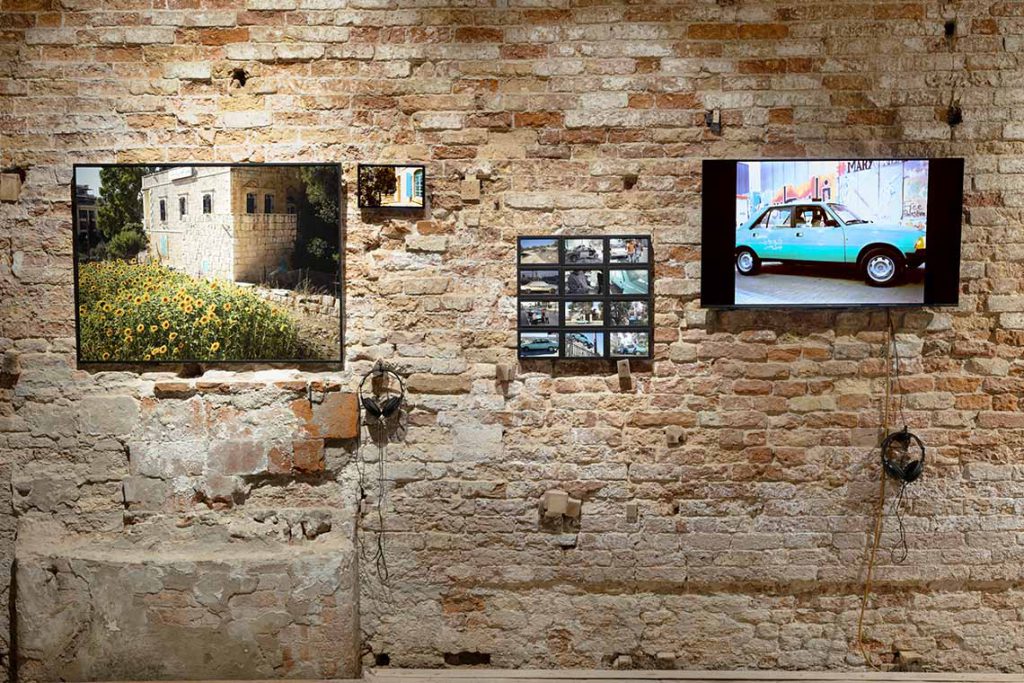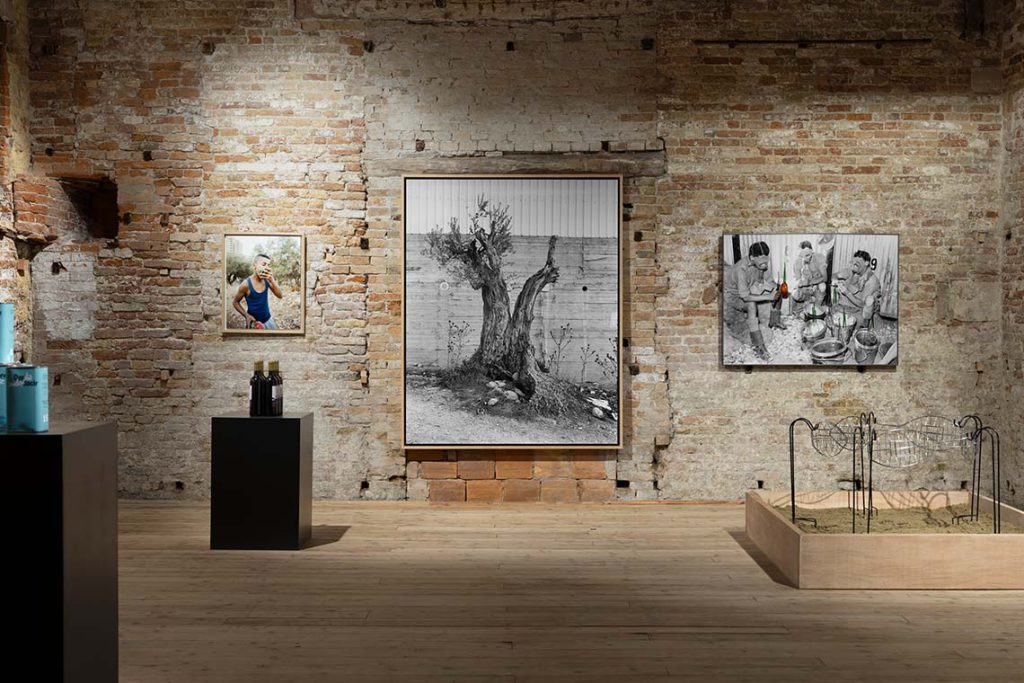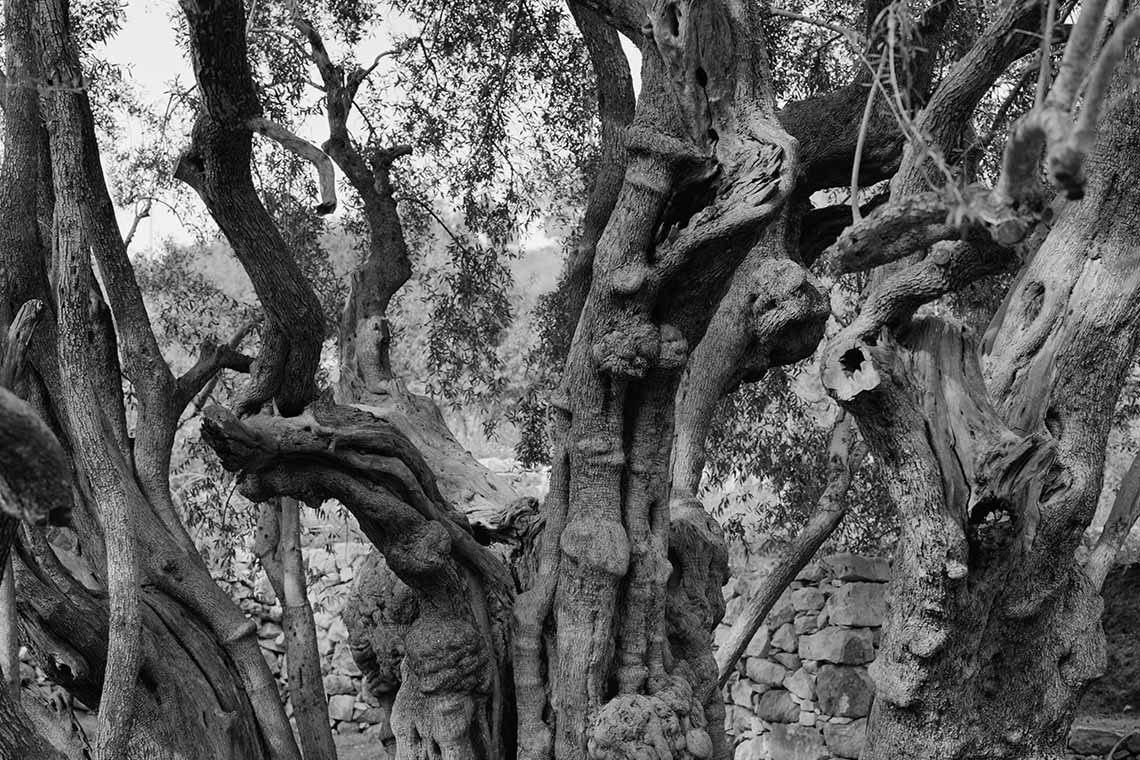A small but deeply thoughtful exhibition reminds us of the importance of community, and of the value of a measured artistic response to politics.
All art is political. Often, however, its politics are deeply submerged. Artists of abstract or representational pieces might go out of their way to present their work as apolitical, but politics are embedded within the very culture, regime and place of creation. At the Venice Biennale, the play between politics and art has always been precarious, with certain issues allowed to lead the programme while others are ushered into the shadows. At this year’s edition, however, politics is present more than ever – and across the whole city.
2022’s edition opened against the backdrop of Russia’s invasion of Ukraine a month prior, prompting the resignations of Russia’s artists and the curator of the Russian Pavilion, on loan this year to Bolivia. This year, with the Biennale taking place in the wake of last autumn’s attack on Israel by Hamas and against ongoing atrocities in Gaza, the Israeli Pavilion closed shop after artist Ruth Patir withheld her presentation, announcing on Instagram that: “I can only do what I can with the space I have, I prefer to raise my voice with those I stand with in their scream, ceasefire now, bring the people back home from captivity.”
As visitors peered through the pavilion’s glass wall to try and glimpse Patir’s work, armed guards stood by as a protest of around 100 supporters of the Art Not Genocide Alliance (ANGA) protested, moving on to the neighbouring United States Pavilion and then those of Germany, France and Britain. Elsewhere in the city, a banner reading ‘Palestina Libera’ hung from the Rialto Bridge. Venice has no Palestinian national pavilion because there is no recognised Palestinian state, and this is unlikely to change so long as the USA continues to veto any Palestinian UN membership. But in an event where big-hit shows and shiny, expensive art objects might grab the headlines, there is one exhibition which delicately presents Palestinian voices through works of solidarity, collaboration, community and hope.
In the shadow of the Gallerie dell’Accademia’s blockbuster Willem de Kooning show is SOUTH WEST BANK: Landworks, Collective action and Sound, a group exhibition of more than 20 Palestinian artists and allies. It is not a surrogate national pavilion, but considers, as the name suggests, the southwestern area of the West Bank, especially focusing on the work of two organisations: Artists + Allies x Hebron, founded by Issa Amro and Adam Broomberg; and Dar Jacir for Art and Research, a centre of community, agriculture and learning led by Aline Khoury and Emily Jacir within an 1880s home, which Jacir’s family originally owned through to the early years of the British Mandate.

Images courtesy of Artist +Allies x Hebron and Dar Jacir
The exhibition opens with Mohammad Saleh’s Ardawa June 30 (2023). Excerpts from the permaculture designer’s video blog document the bioremediation of Dar Jacir’s urban farm following a 2021 Israeli Army attack on the premises, which burned the garden he had tended since 2019. The removal of grenades, de-pollution of soil and gradual regrowth is a meaningful opener for an exhibition based on slowness, awareness and rootedness.
These qualities are also present in Michael Rakowitz’s On the question of making art in cities under siege: exploring the intersection of hospitality and hostility (2018–24), with five fish-shaped metal clamps hanging from shepherd hooks in a circle. Presented here as sculpture, its primary function would be as a masgouf grill with fire at its centre. “The Tigris carp isn’t the world’s most fabulous fish, but if you cook it very slowly and from a distance, it turns quite delicious,” explains curator Jonathan Turner of the artwork, which was originally intended for use at Dar Jacir in January for slow, shared cooking. For Rakowitz, this symbolises the start of coming together around fire and food, with the slowness enabling conversation and a community that may evolve from a simple dinner to an equally delicious society. But the object is pristine, untouched by fish or flames, offering both potential for new conversations but also a reminder of the current crisis and why it remains unused.
Both projects speak to ideas of regrowth at Dar Jacir. “Intimacy and slowness is at the heart of our project,” says Emily Jacir of the house and garden, adding that it is “a work in process and a place where conversations and exchanges are constantly unfolding over the years.” Vivien Sansour’s project, Home (2018), is also long-durational. A terrace of Dar Jacir’s garden was planted with mloukheyeh, a vegetable plant used to make a warm and comforting Palestinian meal. A photograph of the site, taken before shrapnel was removed from the soil, irrigation installed and seeding carried out, sits above the same vantage of a flourishing garden providing food and a space of sharing and story. It is part of Sansour’s wider Palestine Heirloom Seed Library, a project researching local seeds and variants of edible plants to create a growing archive of seeds which are then also sold. Each packet contains a few zinnia seeds to help ensure that the edible plants are interrupted with colour and joy.
Away from the garden, Dar Jacir is a place of archive. Emily Jacir’s own work, Untitled family archive, Bethlehem (2007), is a visual compression of historic glass-plate images. Evolving from Jacir’s digitisation and preservation of family photos, in the centre of the spectral image is her grandfather looking straight back, a punctum pulling the viewer into the complex palimpsest of meaning. The place itself, built by Yusuf Ibrahim Jacir in the 1880s, is similarly a compression of stone, mortar and garden.

From left to right: Baha Hilo. PRESERVE. 2022-2024. Olive oil canisters design by Meat Studio; Sari Khoury. Grapes of Wrath. 2021. Philokalia wine bottles; Adam Rouhana. A Lion’s Watermelon. 2024. Photography; Adam Broomberg and Rafael Gonzalez. Anchor in the Landscape, N31°31.4165’ E035°06.1153’. 2023. Photography;
Dima Srouji and Jasbir Puar. Untitled (Onion Masks). 2023. From the series Revolutionary Enclosures (Until the Apricots). Photography and blown glass;
Michael Rakowitz. On the question of making art in cities under siege: exploring the intersection of hospitality and hostility. 2018-2024. Masgouf grill installation, cooking utensils, sand.
Installation view at Galleria Magazzino, Venice. Images courtesy of Artist +Allies x Hebron and Dar Jacir
South West Bank was planned months before the violence wrought by Hamas and Israel, and has subtly changed as a response. This shift has not so much been to address the ongoing tragedy, but to step back and allow space for reflection. “Some pieces were too explicit,” Turner says of works now removed from the original plans, adding that “this exhibition is supposed to be non-explicit. The strength of it is that so much of the work feels as though it’s not about resolution.” In an increasingly binary and loud conflict, from which it is ever harder to see a crack of light offering a potential way out of the darkness, it is brave and not easy to take such a step back and pause, now of all moments. Turner goes on to explain that he didn’t want works which only presented a singular argument, but those that were “much more about resilience and co-resistance”.
Such a notion of ‘long time’ speaks to the reflective approach of the place and exhibition. Not all responses are slow and considered, however. On 7 October last year, as Hamas militants swept into the Gaza Strip slaughtering and taking hostages, artists including Palestinian-born artist Jumana Manna – present in the curation with an off-site film around the politics and legality of foraging native plants – posted provocative Instagram Story posts (now expired and which Manna subsequently said she regretted) that appeared to make light of the situation. Their immediate reaction to the attack, and that of others to their posts, only served to highlight the dilemma that sits at the heart of operating in such a highly charged and inevitably visceral environment. The risks involved in doing so – especially when juxtaposed with the quieter, durational, intergenerational and intercultural space present in the artworks and Dar Jacir – are all too apparent to Turner, who suggests that “we have to be really careful about instrumentalisation. The artists are in mourning … and art takes time, it takes time to digest.”
Turner’s words sit at the crux of how artists – and art – can possibly respond to a crisis as intense and as violent as the acts of Hamas and Israel. Contemplative respite is provided by the six large black-and-white photographs by Adam Broomberg and Rafael Gonzalez that punctuate the South West Bank space. In contrast to immediate anger response, they offer a look into a resonant, deeper time than even that of Dar Jacir, albeit one equally at risk. Each image is of an olive tree in the Occupied Territories, with the oldest example shown estimated to be over 4500 years old. With each titled Anchor in the Landscape and followed by its coordinates, the photographed trees – an extract of a larger series – include some that no longer exist, having been chopped down or burnt by Israel alongside 800,000 others since 1967.
Of all the ideas that flourish from South West Bank, the longevity dimension embodied by the olive trees underlines how finding space and time to consider, regroup, renew and build for a shared future is critical. Right now, citizens across Palestine and Israel have little time for either luxury, and a lack of such opportunity to breathe can quickly lead to assumption, anger and offence. This measured presentation shows the value of taking time to pause and hope.
SOUTH WEST BANK – Landworks, Collective Action and Sound runs until 24 November



